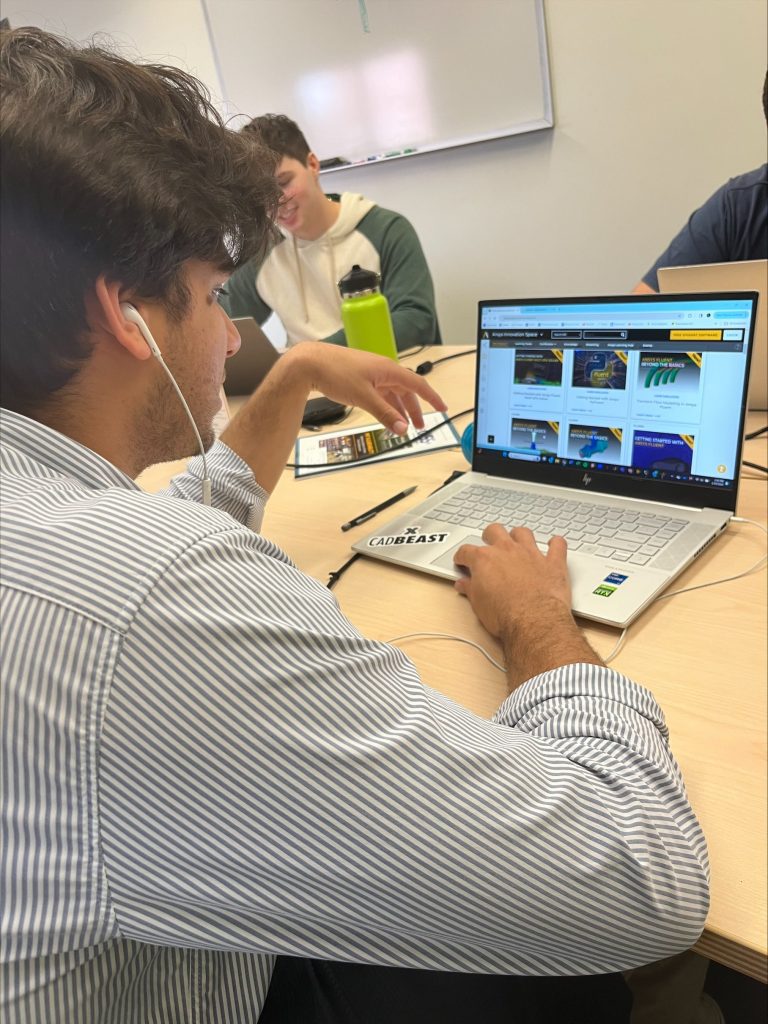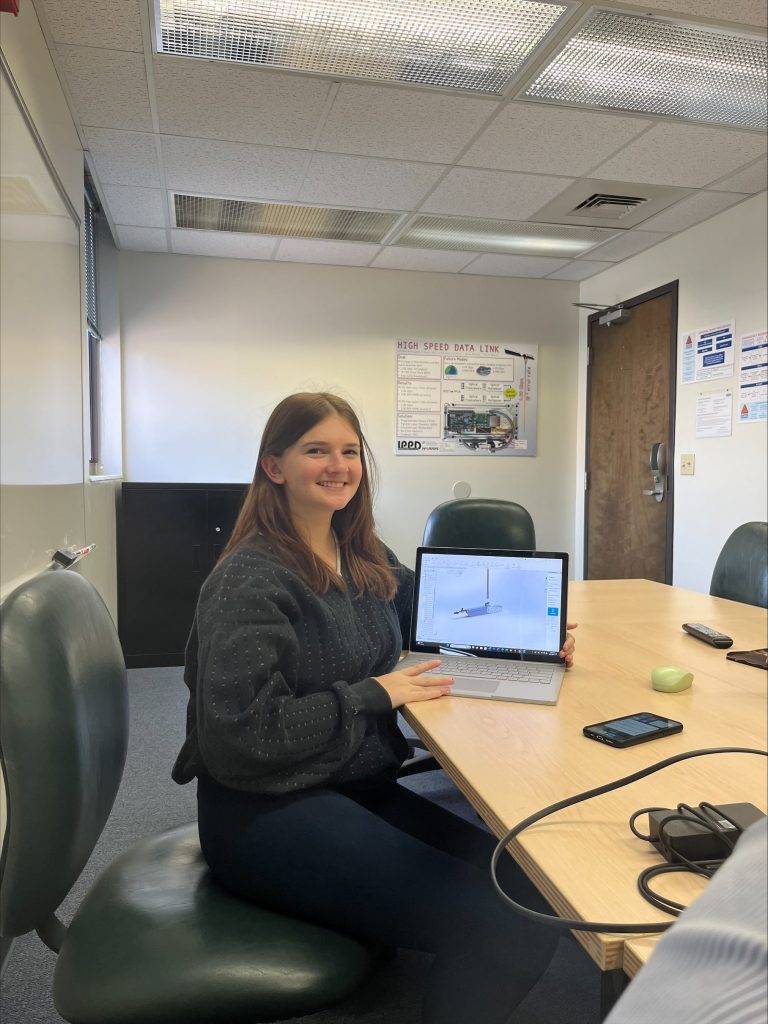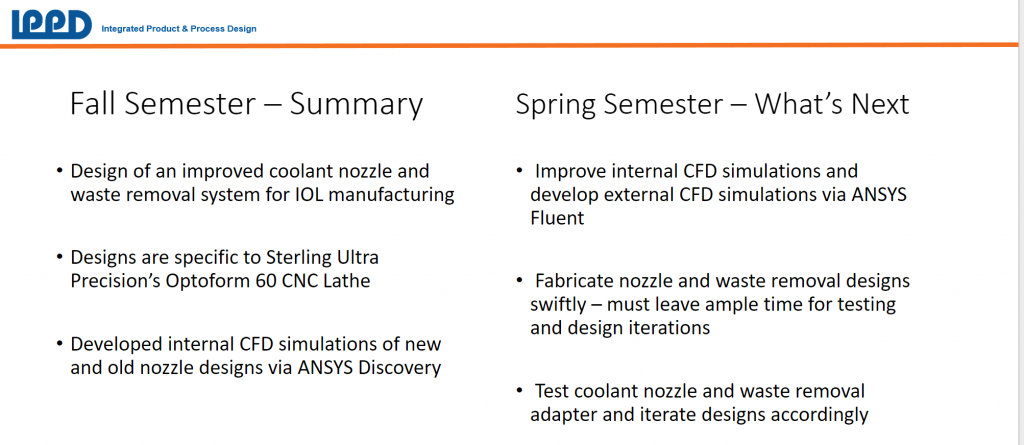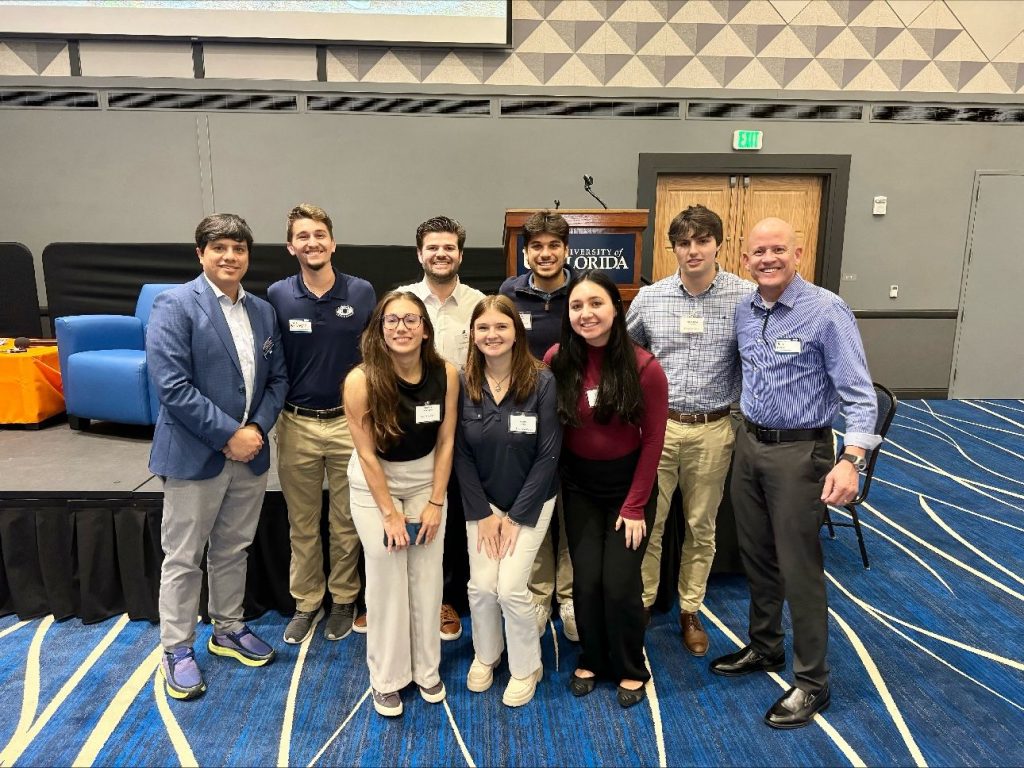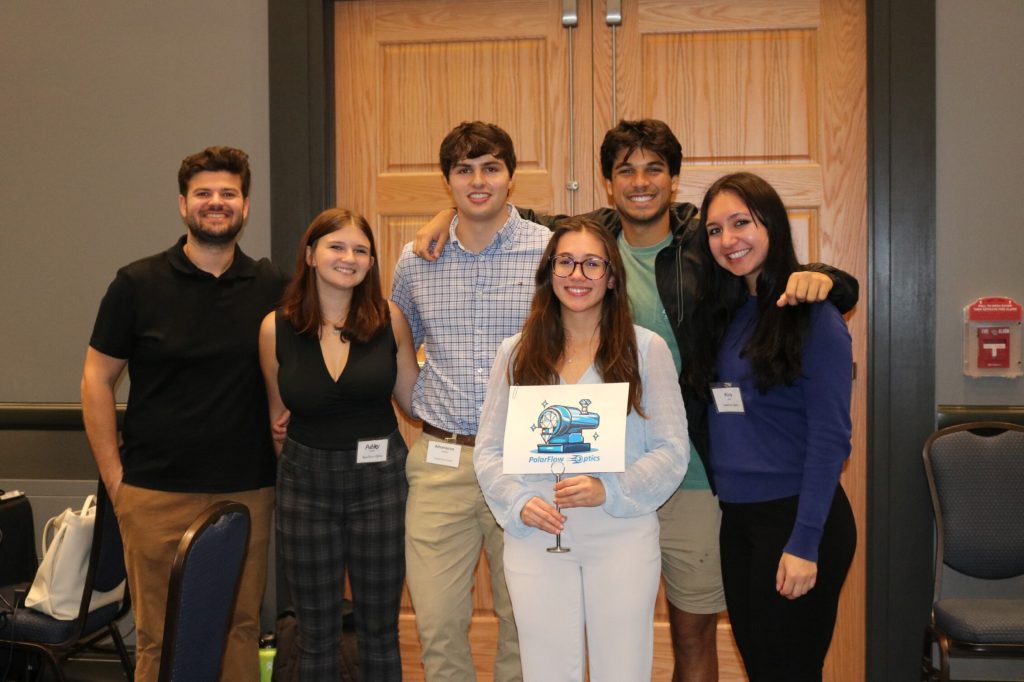Welcome back to our weekly update on the progress of our project! As we continue our journey of development and improvement of the Optoform 40/60, Week 19 has been a pivotal moment for our team as we delve into refining our testing plans. We have been focusing on testing the potential materials of the suction tube, ordering the components needed to test our 3D printed nozzle (such as tubing, fittings, etc), and determining which components will work for our controls system. We have also improved our air jacketed nozzle, and 3D printing. A lot of progress has been made in the new CAD design of the suction tube. Join us as we explore the intricacies of our testing strategies and the exciting progress we’ve made.
Figure 1: The inner piece of the nozzle
Figure 2: The air jacket for the nozzle

Figure 3: Materials that arrived for testing the suction tube
